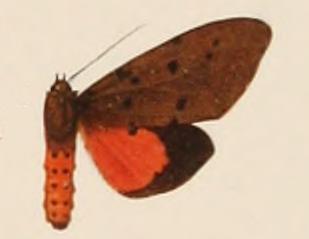
Geckolepis is a genus of geckos, commonly referred to as fish scale geckos, which are endemic to Madagascar and the Comoro Islands. They are nocturnal, arboreal, insectivorous lizards, found in primary and secondary forest, as well as degraded habitats. They are best known for their ability to lose their skin and scales when grasped by a predator.

Pygomeles is a genus of skinks, lizards in the family Scincidae. The genus is endemic to Madagascar.

Zonosaurus is a genus of gerrhosaurid lizards.

Alphonse Milne-Edwards was a French mammalologist, ornithologist and carcinologist. He was English in origin, the son of Henri Milne-Edwards and grandson of Bryan Edwards, a Jamaican planter who settled at Bruges.
Jean Charles Coquerel was a French navy surgeon, algologist, and entomologist.

Alfred Grandidier was a French naturalist and explorer.

Grandidier's mongoose, also known as the giant-striped mongoose or Grandidier's vontsira, is a small carnivoran that lives only in a very small area of southwestern Madagascar, in areas of spiny forest vegetation. It is pale brown or grayish coloured, with eight wide, dark stripes on its back and sides. Grandidier's mongoose is larger than the related broad-striped Malagasy mongoose, G. fasciata, and its stripes are not as wide. The species is named after Alfred Grandidier.

Colotis, called orange tips or Arabs, is a genus of butterflies of the subfamily Pierinae found mainly in Africa and south-western Asia. The larvae of all Colotis species specialize on plants in the family Capparaceae.

The narrow-striped mongoose is a member of the family Eupleridae endemic to Madagascar. It inhabits the Madagascar dry deciduous forests in western and southwestern Madagascar, where it lives from sea level to about 125 m (410 ft) between the Tsiribihina and Mangoky rivers. In Malagasy it is called bokiboky.

Axiopoeniella is a genus of moths in the subfamily Arctiinae. The genus was described by Strand in 1909.
Guillaume Grandidier was a French geographer, ethnologist, zoologist who studied the island of Madagascar.

Scincinae is a subfamily of lizards. The subfamily contains 33 genera, and the genera contain a combined total of 284 species, commonly called skinks. The systematics is at times controversial. The group is probably paraphyletic. It is one of three subfamilies of the family Scincidae, the other two being Acontinae and Lygosominae.

Hypogeomys australis is an extinct rodent from central and southeastern Madagascar. First described in 1903, it is larger than its close relative, the living Hypogeomys antimena, which occurs further west, but otherwise similar. Average length of the femur is 72.1 mm, compared to 63.8 mm in H. antimena. One of the few extinct rodents of Madagascar, it survived to at least around 1536 BP based on radiocarbon dating. Little is known of its ecology, but it may have lived in burrows like its living relative and eaten some arid-adapted plants.

Platyptilia farfarellus is a moth of the family Pterophoridae. The species was described by Philipp Christoph Zeller in 1867. It is found from central and southern Europe to Asia Minor, Micronesia and Japan. It is also known from Africa, where it has been recorded from Equatorial Guinea, Kenya, Madagascar, Mauritius, Nigeria, South Africa, São Tomé & Principe, Tanzania, Uganda, the Seychelles and Malawi.
Ceutholopha isidis is a species of snout moth in the genus Ceutholopha. It was described by Zeller in 1867, and is known from Algeria, Cyprus, Egypt, India, Pakistan, Sri Lanka, Afghanistan, Congo, Indonesia, Iran, Italy (Lampedusa), Mauritius, Morocco, Namibia, Nigeria, Réunion, South Africa, Sudan and the United Arab Emirates. One specimen was caught on 18 August 2012, at Dymchurch, England by J. E. Owen. The moth is either an adventive, or a possible immigrant because it arrived during a period of immigration.
Faveria leucophaeella is a species of snout moth in the genus Faveria. It was described by Philipp Christoph Zeller in 1867. It is found in South Africa, Australia, Japan, Taiwan and China.
Axiopoeniella octocentra is a species of moth in the subfamily Arctiinae first described by Vári in 1964. It is found in South Africa.

Mimophis is a genus of snakes in the family Lamprophiidae found in Madagascar. Prior to 2017, the genus comprised only a single species, Mimophis mahfalensis. A second species, Mimophis occultus, was described in 2017.

Madascincus is a genus of skinks, lizards in the family Scincidae. The genus is endemic to Madagascar. Some taxonomic authorities place the group in the genus Amphiglossus.














